Mitsubishi ASX vs Nissan Qashqai – Which one offers the better deal?
Compare performance, boot capacity, efficiency and price at a glance.
Find out which car is the better choice for you – Mitsubishi ASX or Nissan Qashqai?
Costs and Efficiency:
Looking at overall running costs, both models reveal some interesting differences in everyday economy.
Mitsubishi ASX has a convincingly advantage in terms of price – it starts at 20600 £, while the Nissan Qashqai costs 29400 £. That’s a price difference of around 8829 £.
Fuel consumption also shows a difference: Mitsubishi ASX manages with 4.40 L and is therefore somewhat more efficient than the Nissan Qashqai with 5.10 L. The difference is about 0.70 L per 100 km.
Engine and Performance:
Under the bonnet, it becomes clear which model is tuned for sportiness and which one takes the lead when you hit the accelerator.
When it comes to engine power, the Nissan Qashqai has a somewhat edge – offering 190 HP compared to 158 HP. That’s roughly 32 HP more horsepower.
In acceleration from 0 to 100 km/h, the Nissan Qashqai is minimal quicker – completing the sprint in 7.90 s, while the Mitsubishi ASX takes 8.50 s. That’s about 0.60 s faster.
In terms of top speed, the Nissan Qashqai performs slightly better – reaching 206 km/h, while the Mitsubishi ASX tops out at 180 km/h. The difference is around 26 km/h.
There’s also a difference in torque: Nissan Qashqai pulls slightly stronger with 330 Nm compared to 270 Nm. That’s about 60 Nm difference.
Space and Everyday Use:
Beyond pure performance, interior space and usability matter most in daily life. This is where you see which car is more practical and versatile.
Both vehicles offer seating for 5 people.
In curb weight, Mitsubishi ASX is hardly perceptible lighter – 1296 kg compared to 1420 kg. The difference is around 124 kg.
In terms of boot space, the Nissan Qashqai offers slight more room – 504 L compared to 484 L. That’s a difference of about 20 L.
In maximum load capacity, the Mitsubishi ASX performs barely noticeable better – up to 1596 L, which is about 149 L more than the Nissan Qashqai.
When it comes to payload, Nissan Qashqai somewhat takes the win – 520 kg compared to 449 kg. That’s a difference of about 71 kg.
Who wins the race?
The Mitsubishi ASX proves to be barely ahead and therefore becomes our DriveDuel Champion!
Mitsubishi ASX is the better all-rounder in this comparison.

Mitsubishi ASX
Mitsubishi ASX
The Mitsubishi ASX presents itself as a compact crossover that combines practicality with style. Its sleek design and versatile interior make it an appealing choice for both urban and rural settings. With a focus on providing a comfortable driving experience, the ASX also offers a range of modern features that enhance connectivity and safety.
details @ Mitsubishi
@ Mitsubishi
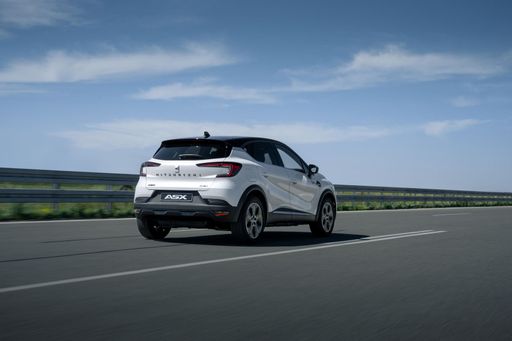 @ Mitsubishi
@ Mitsubishi
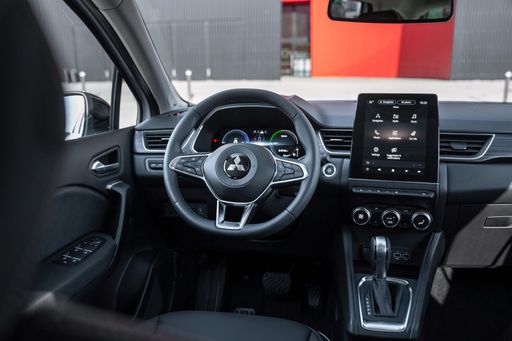 @ Mitsubishi
@ Mitsubishi
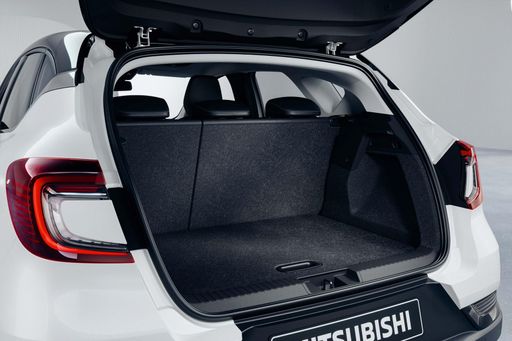 @ Mitsubishi
@ Mitsubishi
Nissan Qashqai
The Nissan Qashqai stands out in the compact SUV market with its sleek design and versatile features. Its smooth ride and refined interior make it a popular choice for both city driving and weekend adventures. Advanced safety technologies and user-friendly infotainment add to its appeal, ensuring a comfortable and secure driving experience for all passengers.
details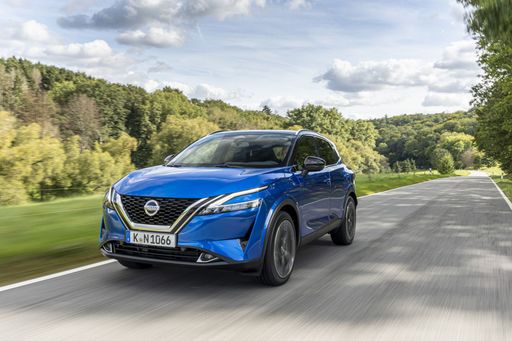 @ Nissan
@ Nissan
 @ Nissan
@ Nissan
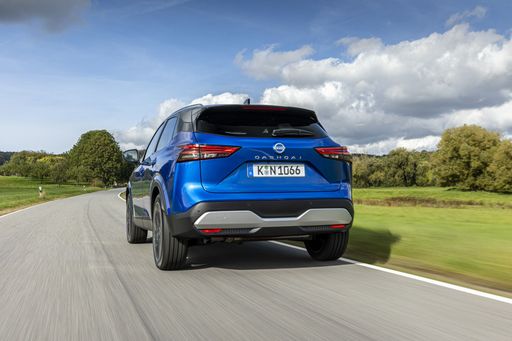 @ Nissan
@ Nissan
 @ Nissan
@ Nissan
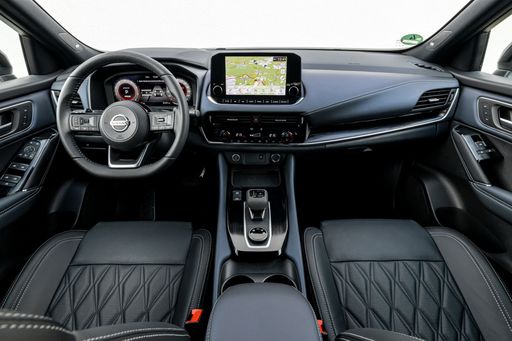 @ Nissan
@ Nissan

|

|
|
|
|
Costs and Consumption |
|
|---|---|
|
Price
20600 - 32500 £
|
Price
29400 - 42500 £
|
|
Consumption L/100km
4.4 - 6 L
|
Consumption L/100km
5.1 - 6.8 L
|
|
Consumption kWh/100km
-
|
Consumption kWh/100km
-
|
|
Electric Range
-
|
Electric Range
-
|
|
Battery Capacity
-
|
Battery Capacity
-
|
|
co2
99 - 135 g/km
|
co2
116 - 154 g/km
|
|
Fuel tank capacity
48 L
|
Fuel tank capacity
55 L
|
Dimensions and Body |
|
|---|---|
|
Body Type
SUV
|
Body Type
SUV
|
|
Seats
5
|
Seats
5
|
|
Doors
5
|
Doors
5
|
|
Curb weight
1296 - 1493 kg
|
Curb weight
1420 - 1665 kg
|
|
Trunk capacity
348 - 484 L
|
Trunk capacity
479 - 504 L
|
|
Length
4239 mm
|
Length
4425 mm
|
|
Width
1797 mm
|
Width
1835 mm
|
|
Height
1575 mm
|
Height
1625 mm
|
|
Max trunk capacity
1458 - 1596 L
|
Max trunk capacity
1422 - 1447 L
|
|
Payload
397 - 449 kg
|
Payload
466 - 520 kg
|
Engine and Performance |
|
|---|---|
|
Engine Type
Petrol, Petrol MHEV, Full Hybrid
|
Engine Type
Petrol MHEV, Full Hybrid
|
|
Transmission
Manuel, Automatic
|
Transmission
Manuel, Automatic
|
|
Transmission Detail
Manual Gearbox, Dual-Clutch Automatic, Automatic Gearbox
|
Transmission Detail
Manual Gearbox, CVT, Reduction Gearbox
|
|
Drive Type
Front-Wheel Drive
|
Drive Type
Front-Wheel Drive, All-Wheel Drive
|
|
Power HP
91 - 158 HP
|
Power HP
140 - 190 HP
|
|
Acceleration 0-100km/h
8.5 - 14 s
|
Acceleration 0-100km/h
7.9 - 10.2 s
|
|
Max Speed
168 - 180 km/h
|
Max Speed
170 - 206 km/h
|
|
Torque
160 - 270 Nm
|
Torque
240 - 330 Nm
|
|
Number of Cylinders
3 - 4
|
Number of Cylinders
3 - 4
|
|
Power kW
67 - 116 kW
|
Power kW
103 - 140 kW
|
|
Engine capacity
999 - 1789 cm3
|
Engine capacity
1332 - 1497 cm3
|
General |
|
|---|---|
|
Model Year
2024 - 2025
|
Model Year
2024
|
|
CO2 Efficiency Class
D, C
|
CO2 Efficiency Class
E, D
|
|
Brand
Mitsubishi
|
Brand
Nissan
|
What drive types are available for the Mitsubishi ASX?
Available configurations include Front-Wheel Drive.
The prices and data displayed are estimates based on German list prices and may vary by country. This information is not legally binding.
